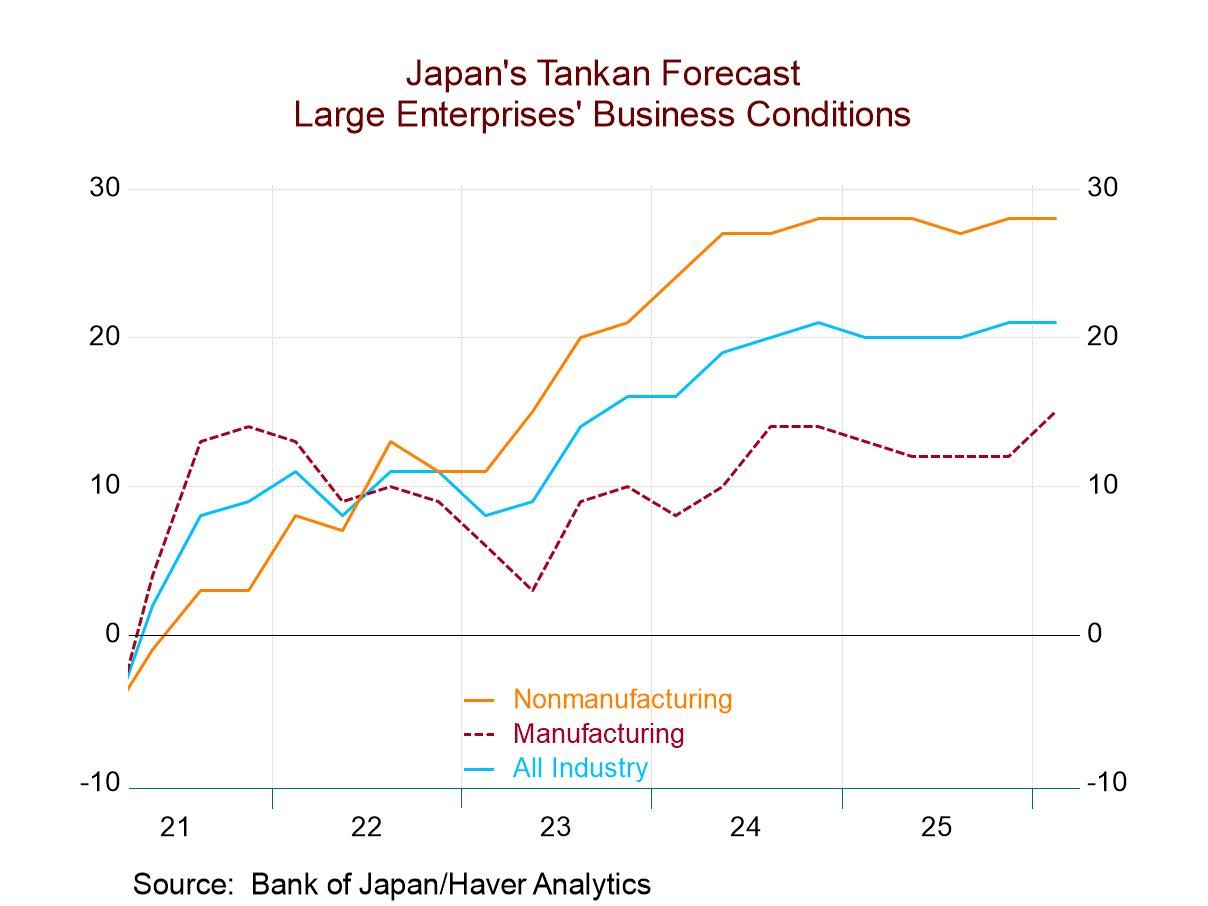 Global| Jun 05 2024
Global| Jun 05 2024The Rising Tide of Composite PMIs – Is Still Mixed

Composite PMIs are back to showing more places indicating improvement month-to-month. Only 40% of these 25 reporters have PMI values that weakens month-to-month up from 56% weakening in April. But there is an overpowering tilt of reporters showing expansion compared to contraction with only 4 reporters out of 25 showing contraction (Composite PMI<50) in May, the same as in April; March, has 6 reporters below 50.
Over 12 months more show weakening compared to a year ago, as 70% of reporters have PMIs below 50. But over six months that count is reduced to 34.8%, and over three months only 30% show weakening jurisdictions.
Contraction has been slightly more common over three-, six-, and 12-month periods, with 6-showing contraction over three months, 9-showing contraction over six months and 11-showing contraction over 12-months.
The percentile standings that are a completely different animal- they show the ranking of the PMI gauge over the last four years (to May 2020) compared to past performance. The 50% mark in the queue standing reflects the median value for each jurisdiction over the last four years. Ten of 25 jurisdictions are below their median performance in May. There is still a lot of under-performance.
The composite PMIs this month come of the heels of the release of the service sector PMIs that have values above 50 for all reporting participants except Russia. However, not all countries report services and manufacturing separately. Among the ten who report separate service sectors, seven of them showed growth erosion in May compared to April. So monthly PMI improvements are laid at the feet of manufacturing sectors or countries that do provide separate service sector status.
Smaller developing countries are struggling the most. The summary data show slight but steady increase in the average PMI that stands at 52.8 in May – above its three-month average. The median weakens over six months then rebounds above its 12-month average over three months as well as in May. The BRIC-3 (BIC? -excluding Russia) has the highest PMI average in the table at 56.2 in May. The U.S., U.K. and EMU are at 53.3, above the all-average and all-median. So, it’s the smaller economies that bring the averages lower. In May, Zambia, Egypt, and Hong Kong have PMIs below 50. France also has a PMI reading below 50. Apart from these, PMI reading below 52 are found in May for Kenya, Ghana, Sweden, and Russia (Ireland uses the reading from April that is below 52). On the strong side, May readings over 54 are featured in the U.S. (54.5), Spain (56.6), India (60.5), Saudi Arabia (56.4), UAE (55.3), Singapore (54.2), and China (54.1).
In terms of relativity, the queue standings for the BRIC-3 are at 76.5%, the All-average is at 56.7%, the U.S., U.K. and EMU are at 55.8%, and the All-median is at 55.1%. All these groupings show PMI values above their four-year medians. For those countries not included in any of those groups, the average queue standing is 54.4% and the median queue standing for them is 48%, their queue standings average below medians when pooled.

Robert Brusca
AuthorMore in Author Profile »Robert A. Brusca is Chief Economist of Fact and Opinion Economics, a consulting firm he founded in Manhattan. He has been an economist on Wall Street for over 25 years. He has visited central banking and large institutional clients in over 30 countries in his career as an economist. Mr. Brusca was a Divisional Research Chief at the Federal Reserve Bank of NY (Chief of the International Financial markets Division), a Fed Watcher at Irving Trust and Chief Economist at Nikko Securities International. He is widely quoted and appears in various media. Mr. Brusca holds an MA and Ph.D. in economics from Michigan State University and a BA in Economics from the University of Michigan. His research pursues his strong interests in non aligned policy economics as well as international economics. FAO Economics’ research targets investors to assist them in making better investment decisions in stocks, bonds and in a variety of international assets. The company does not manage money and has no conflicts in giving economic advice.






